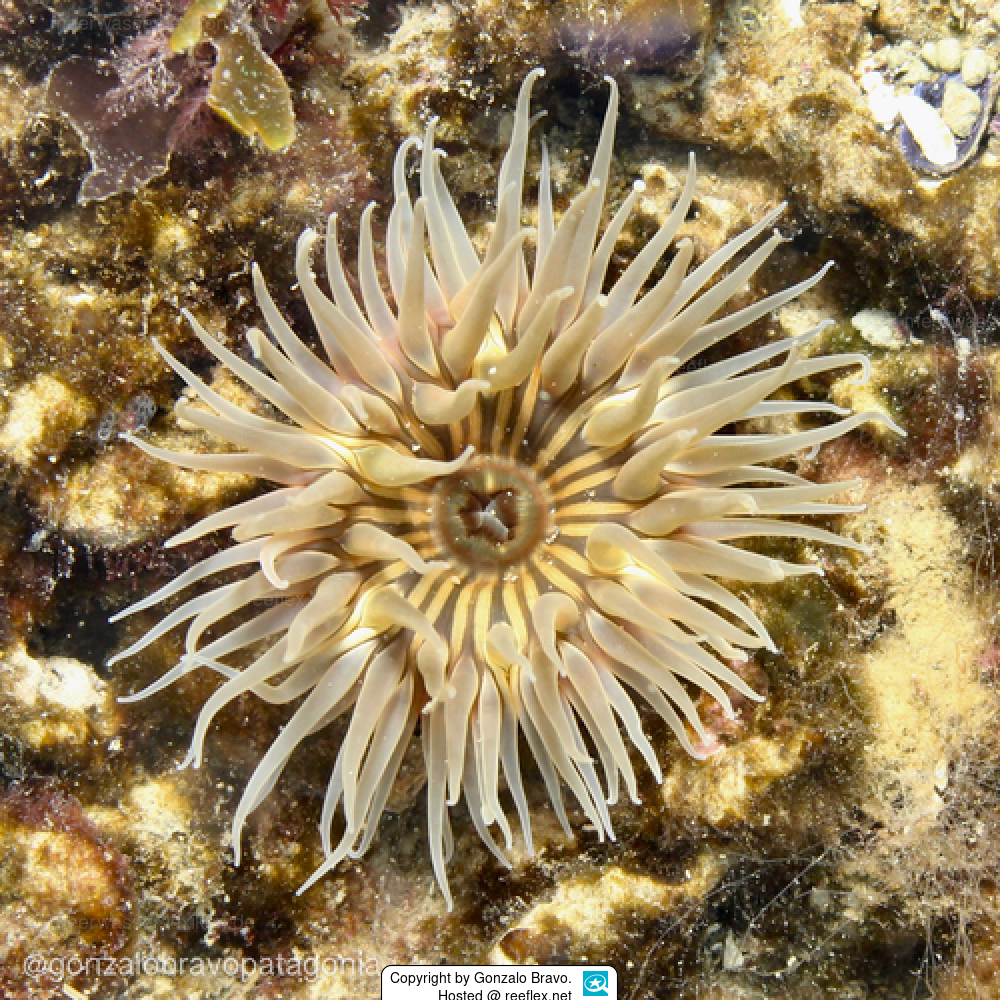Info
We would like to thank the PhD student Gonzalo Bravo, Instituto de Biología de Organismos Marinos, Puerto Madryn,Chubut - Argentine, for the first photo of this interesting
sea anemone!
Parabunodactis imperfecta was found in a study from Las Grutas to Punta Ninfas (Argentina) in both the intertidal and subtidal up to 20 meter animals
and was the predominant species in the intertidal zone.
The anemones were found in intertidal pools and under rocks, in both sheltered and exposed areas, and were usually
covered with shell fragments and small rocks, which gave them good camouflage.
Sea anemomes kept in aquariums expanded rapidly when exposed to light.
The animals quickly reattached to the substrate. when they shrank, then water was expelled from the cinclids.
The predators of the anemone Parabunodactis imperfecta include nudibranchs of the genus Spurilla sp. This marine snail also eats the anemones
Metridium senile lobatum, Anthothoe chilensis and Tricnidactis errans.
The snail has a double benefit of feeding on the mentioned sea anemones, firstly its hunger is satisfied, secondly it uses the captured cnidocytes of the anemones for its own protection against predators.
Such stolen cnidocytes are called "kleptocnids".
sea anemone!
Parabunodactis imperfecta was found in a study from Las Grutas to Punta Ninfas (Argentina) in both the intertidal and subtidal up to 20 meter animals
and was the predominant species in the intertidal zone.
The anemones were found in intertidal pools and under rocks, in both sheltered and exposed areas, and were usually
covered with shell fragments and small rocks, which gave them good camouflage.
Sea anemomes kept in aquariums expanded rapidly when exposed to light.
The animals quickly reattached to the substrate. when they shrank, then water was expelled from the cinclids.
The predators of the anemone Parabunodactis imperfecta include nudibranchs of the genus Spurilla sp. This marine snail also eats the anemones
Metridium senile lobatum, Anthothoe chilensis and Tricnidactis errans.
The snail has a double benefit of feeding on the mentioned sea anemones, firstly its hunger is satisfied, secondly it uses the captured cnidocytes of the anemones for its own protection against predators.
Such stolen cnidocytes are called "kleptocnids".







 MSc Gonzalo Bravo, Argentinien
MSc Gonzalo Bravo, Argentinien

